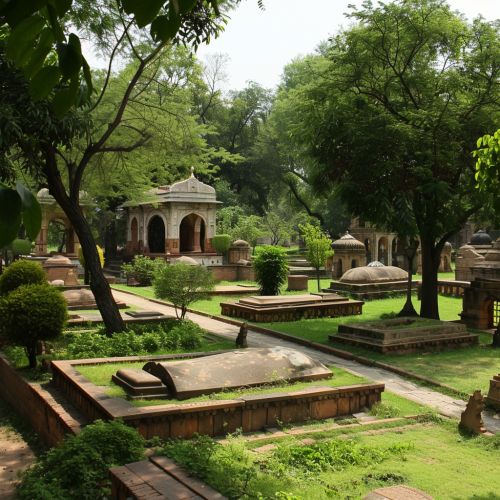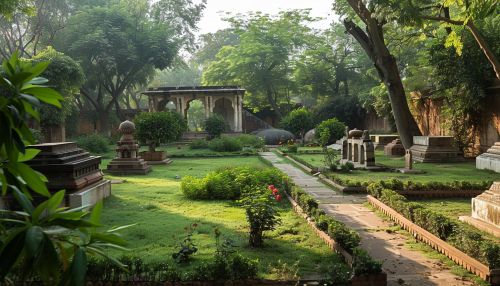Lodhi Dynasty
History of the Lodhi Dynasty
The Lodhi Dynasty was the last dynasty of the Delhi Sultanate, ruling from 1451 to 1526. It was founded by Bahlul Khan Lodhi, who was of Pashtun (Afghan) origin. The dynasty is notable for its contributions to the architectural and cultural landscape of India, as well as for its role in the political dynamics of the subcontinent during its time.


Bahlul Khan Lodhi
Bahlul Khan Lodhi ascended to power in 1451 after the decline of the Sayyid Dynasty. He was a capable military leader and administrator who managed to consolidate his rule over the fragmented territories of the Delhi Sultanate. Bahlul's reign was marked by efforts to restore the stability and prosperity of the Sultanate, which had been weakened by internal strife and external invasions.
Sikandar Lodhi
Bahlul Khan Lodhi was succeeded by his son, Sikandar Lodhi, in 1489. Sikandar Lodhi is often regarded as one of the most competent rulers of the Lodhi Dynasty. He expanded the Sultanate's territory, bringing regions such as Bihar and Bengal under his control. Sikandar was also a patron of the arts and learning, and he established the city of Agra, which later became a significant center of the Mughal Empire.
Ibrahim Lodhi
The last ruler of the Lodhi Dynasty was Ibrahim Lodhi, who ascended the throne in 1517. His reign was fraught with challenges, including internal rebellions and external threats. Ibrahim's autocratic style of governance alienated many of his nobles, leading to widespread dissent. His inability to maintain control ultimately led to the dynasty's downfall.
Administration and Governance
The Lodhi Dynasty maintained a centralized form of administration, similar to their predecessors. The Sultan was the supreme authority, supported by a council of ministers and provincial governors. The administration was divided into various departments, each headed by a high-ranking official.
Military Organization
The military was a crucial component of the Lodhi administration. The army was organized into different units, with a clear hierarchy and chain of command. The cavalry was the most important branch, supported by infantry and artillery. The Lodhi rulers also employed a network of spies and informants to gather intelligence and maintain control over their territories.
Economic Policies
The Lodhi Dynasty implemented several economic policies aimed at boosting agricultural production and trade. They introduced land reforms, standardized weights and measures, and encouraged the cultivation of cash crops. The dynasty also invested in infrastructure development, including the construction of roads, bridges, and irrigation systems.
Cultural Contributions
The Lodhi Dynasty made significant contributions to the cultural and architectural heritage of India. They were patrons of art, literature, and architecture, and their reign saw the construction of several notable monuments.
Architecture
Lodhi architecture is characterized by its use of red sandstone and decorative elements such as calligraphy and geometric patterns. Some of the most famous examples of Lodhi architecture include the Tomb of Sikandar Lodhi and the Shish Gumbad in Delhi. These structures reflect a blend of Persian and Indian architectural styles.
Literature and Arts
The Lodhi rulers were patrons of literature and arts. They supported scholars, poets, and artists, and their courts were centers of cultural activity. Persian was the court language, and many works of literature and poetry were composed during this period. The Lodhi period also saw the development of new forms of music and dance.
Decline and Fall
The decline of the Lodhi Dynasty began during the reign of Ibrahim Lodhi. His autocratic rule and failure to address the grievances of his nobles led to widespread discontent. In 1526, Ibrahim Lodhi faced a formidable challenge from Babur, the founder of the Mughal Empire. The two armies met at the Battle of Panipat, where Ibrahim Lodhi was defeated and killed, marking the end of the Lodhi Dynasty and the beginning of Mughal rule in India.
Legacy
The Lodhi Dynasty left a lasting legacy in the form of architectural monuments, administrative reforms, and cultural contributions. Their rule marked the transition from the medieval to the early modern period in Indian history. The Lodhi Gardens in Delhi, which house several tombs from the Lodhi period, remain a popular historical site and a testament to the dynasty's architectural achievements.
